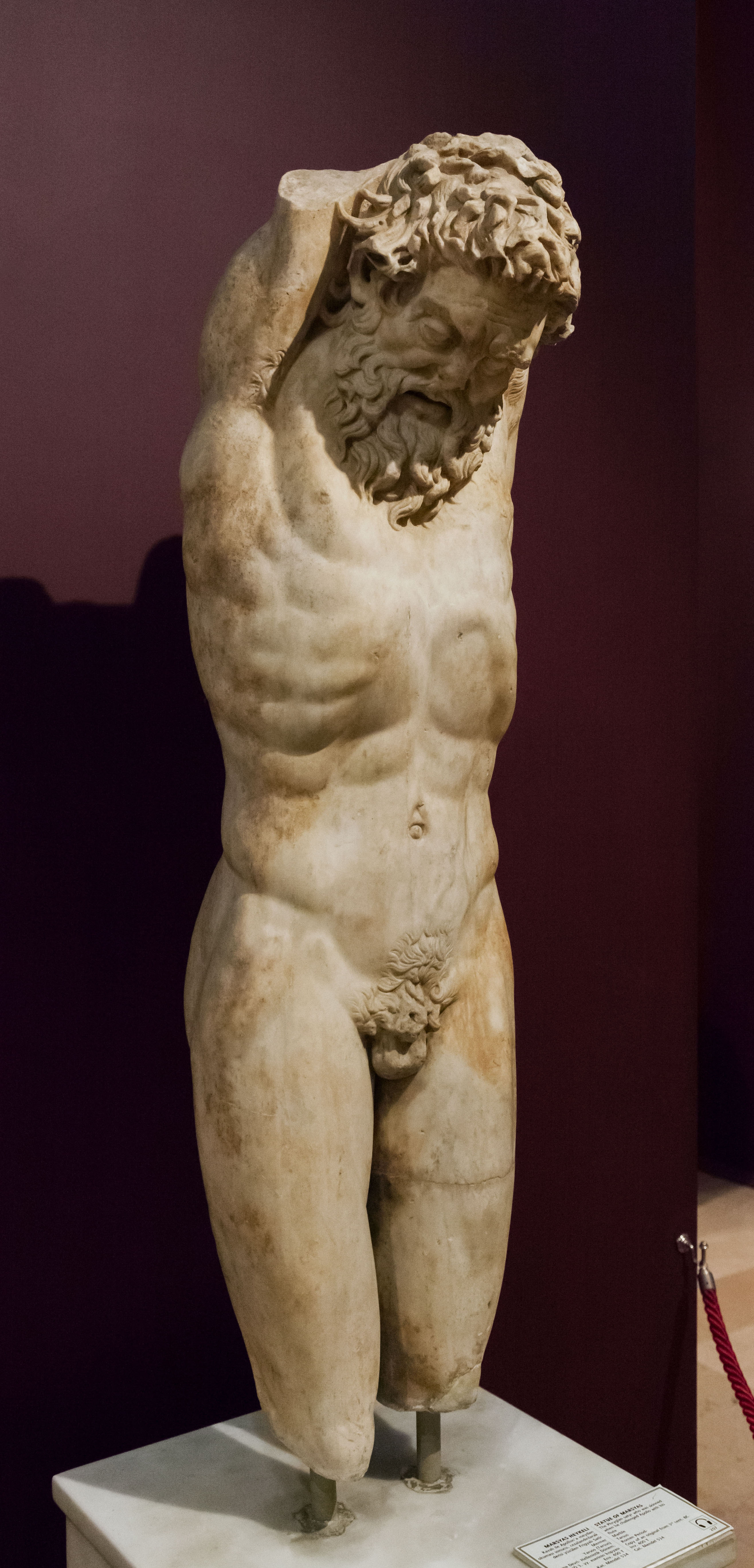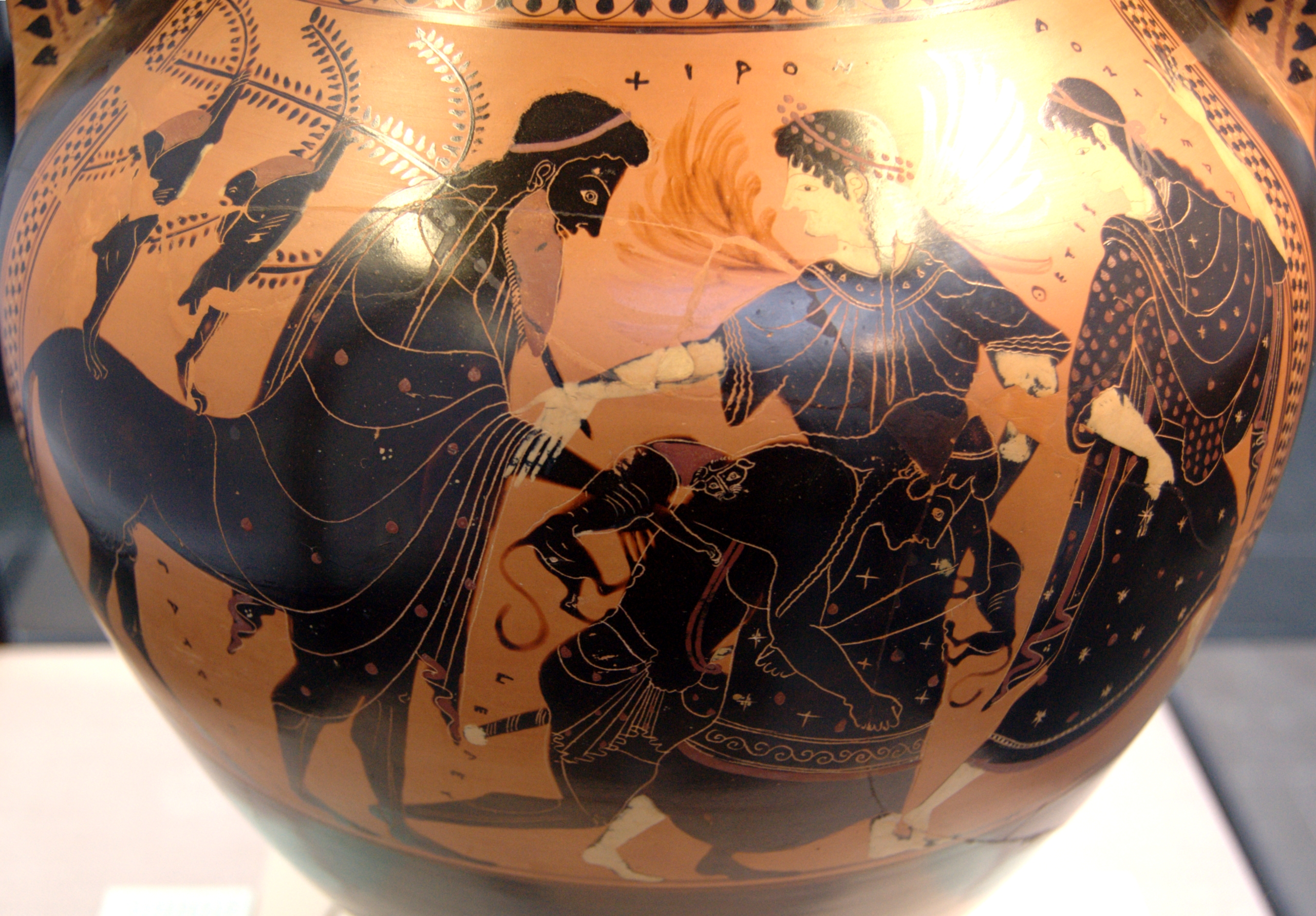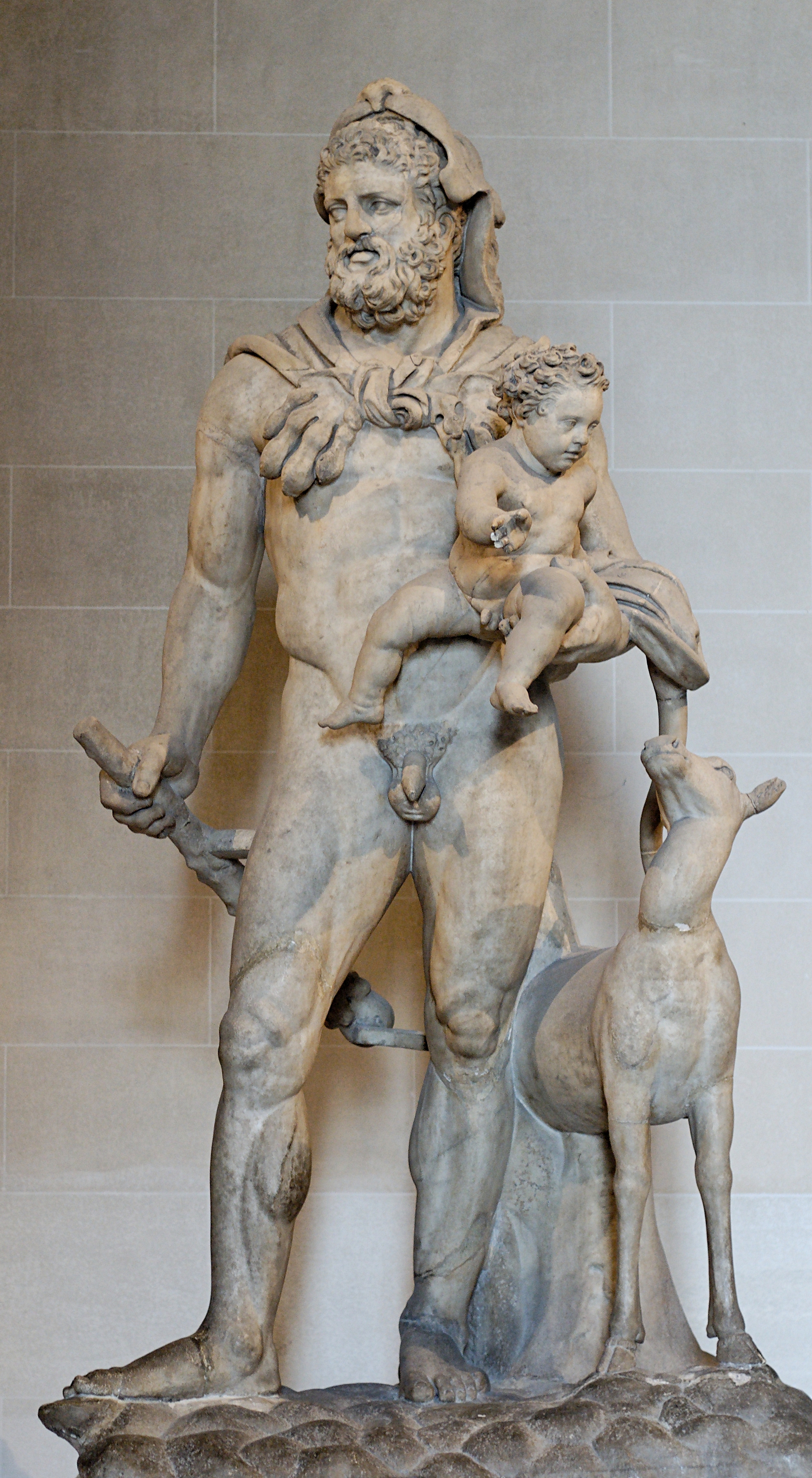|
Le Antichità Di Ercolano Esposte
The ''Le Antichità di Ercolano Esposte'' (''Antiquities of Herculaneum Exposed'') is an eight-volume book of engravings of the findings from excavating the ruins of Herculaneum in the Kingdom of Naples (now Italy). It was published between 1757 and 1792, and copies were given to selected recipients across Europe. Despite the title, the ''Antichità di Ercolano'' shows objects from all the excavations the Bourbons undertook around the Gulf of Naples. These include Pompeii, Stabiae, and two sites in Herculaneum: Resina and Portici. The engravings are high quality and the accompanying text displays great scholarship, but the book lacks the information on context that would be expected of a modern archaeological work. ''Le Antichità'' was designed more to impress readers with the quality of the objects in the King of Naples' collection than to be used in research. The book gave impetus to the Neoclassicism, neoclassical movement in Europe by giving artists and decorators access to a ... [...More Info...] [...Related Items...] OR: [Wikipedia] [Google] [Baidu] |
Charles III Of Spain
Charles III (; 20 January 1716 – 14 December 1788) was King of Spain in the years 1759 to 1788. He was also Duke of Parma and Piacenza, as Charles I (1731–1735); King of Naples, as Charles VII; and King of Sicily, as Charles III (or V) (1735–1759). He was the fourth son of Philip V of Spain and the eldest son of Philip's second wife, Elisabeth Farnese. He was a proponent of enlightened absolutism and regalism. In 1731, the 15-year-old Charles became Duke of Parma and Piacenza following the death of his childless grand-uncle Antonio Farnese, Duke of Parma, Antonio Farnese. In 1734, at the age of 18, he led Spanish troops in a bold and almost entirely bloodless march down Italy to seize the Kingdom of Naples and Kingdom of Sicily and enforce the Spanish claim to their thrones. In 1738, he married the Princess Maria Amalia of Saxony, daughter of Augustus III of Poland, who was an educated, cultured woman. The couple had 13 children, eight of whom reached adulthood. They resided ... [...More Info...] [...Related Items...] OR: [Wikipedia] [Google] [Baidu] |
Giovanni Battista Casanova
Giovanni Battista Casanova (; 2 November 1730 – 8 December 1795) was an Italian painter and printmaker of the Neoclassic period. He was a brother of Giacomo Casanova and Francesco Giuseppe Casanova and was born in Venice. He studied painting under Israel Silvestre and Dietrich at Dresden, and went in 1752 to Rome, where, under the tuition of Anton Raphael Mengs, he became an accomplished artist in pencil and crayon. Among other works he designed the plates to Winckelmann's ''Monumenti antichi''. He was appointed professor in the Academy at Dresden in 1764. Early life The third son of Gaetano Casanova and Zanetta Farussi, Venetian actors, he was the brother of the more famous Giacomo Casanova and the painter Francesco Casanova. Orphaned by his father in 1733, in 1737 he followed his mother to Dresden where he frequented the workshops of Louis de Silvestre and Christian Wilhelm Ernst Dietrich. With a scholarship he returned to Venice and remained there for three y ... [...More Info...] [...Related Items...] OR: [Wikipedia] [Google] [Baidu] |
Olympus (musician)
Olympus (or Olympos, ) is the name of two ancient Greece, ancient Greek musicians, one mythical who lived before the Trojan War and purportedly introduced instrumental music into Greece,(ed. ) and one apparently real, who lived in the 7th century BC. Both musicians were connected with the Aulos, auletic music, which had its origin in Phrygia.Plutarch, ''de Mus.'' It is possible that the elder and mythical Olympus was invented through some mistake respecting the younger and historical Olympus. Mythical Olympus The elder Olympus belongs to the mythical genealogy of Mysian and Phrygian flute-players: Hyagnis (mythology), Hyagnis, Marsyas, and Olympus, to each of whom the invention of the flute was ascribed, and under whose names we have the mythical representation of the contest between the Phrygian ''auletic'' and the Culture of Greece, Greek ''citharoedic'' music: some writers made him the father (instead of son, or disciple, and favourite) of Marsyas, but the genealogy given above ... [...More Info...] [...Related Items...] OR: [Wikipedia] [Google] [Baidu] |
Marsyas
In Greek mythology, the satyr Marsyas (; ) is a central figure in two stories involving music: in one, he picked up the double oboe (''aulos'') that had been abandoned by Athena and played it; in the other, he challenged Apollo to a contest of music and lost his hide and life. Literary sources from Classical antiquity, antiquity often emphasize the ''hubris'' of Marsyas and the justice of his punishment. One strand of modern comparative mythography regards the domination of Marsyas by Apollo as an example of myth that recapitulates a supposed supplanting by the Twelve Olympians, Olympian pantheon of an earlier Pelasgians, "Pelasgian" religion of chthonic Greek hero cult, heroic ancestors and Animism, nature spirits. Marsyas was a devoté of the ancient Mother Goddess Rhea (mythology), Rhea/Cybele, and the mythographers situate his episodes in Celaenae (or Kelainai), in Phrygia, at the main source of the Meander (the river Büyük Menderes River, Menderes in Turkey). Family Wh ... [...More Info...] [...Related Items...] OR: [Wikipedia] [Google] [Baidu] |
Chiron
In Greek mythology, Chiron ( ; also Cheiron or Kheiron; ) was held to be the superlative centaur amongst his brethren since he was called the "wisest and justest of all the centaurs". Biography Chiron was notable throughout Greek mythology for his youth-nurturing nature. His personal skills tend to match those of his foster father Apollo, who taught the young centaur the art of medicine, herbs, music, archery, hunting, gymnastics, and prophecy, and made him rise above his beastly nature. Chiron was known for his knowledge and skill with medicine, and thus was credited with the discovery of botany and pharmacy, the science of herbs and medicine.Pliny the Elder, ''Natural History (Pliny), Naturalis Historia'7.56.3/ref> Like satyrs, centaurs were notorious for being wild, lusty, overly indulgent drinkers and carousers, violent when intoxicated, and generally uncultured delinquents. Chiron, by contrast, was intelligent, civilized, and kind, because he was not related directly to th ... [...More Info...] [...Related Items...] OR: [Wikipedia] [Google] [Baidu] |
Achilles
In Greek mythology, Achilles ( ) or Achilleus () was a hero of the Trojan War who was known as being the greatest of all the Greek warriors. The central character in Homer's ''Iliad'', he was the son of the Nereids, Nereid Thetis and Peleus, king of Phthia and famous Argonauts, Argonaut. Achilles was raised in Phthia along with his childhood companion Patroclus and received his education by the centaur Chiron. In the ''Iliad'', he is presented as the commander of the mythical tribe of the Myrmidons. Achilles' most notable feat during the Trojan War was the slaying of the Trojan prince Hector outside the gates of Troy. Although the death of Achilles is not presented in the ''Iliad'', other sources concur that he was killed near the end of the Trojan War by Paris (mythology), Paris, who shot him with an arrow. Later legends (beginning with Statius' unfinished epic ''Achilleid'', written in the first century CE) state that Achilles was invulnerable in all of his body except ... [...More Info...] [...Related Items...] OR: [Wikipedia] [Google] [Baidu] |
Telephus
In Greek mythology, Telephus (; , ''Tēlephos'', "far-shining") was the son of Heracles and Auge, who was the daughter of king Aleus of Tegea. He was adopted by Teuthras, the king of Mysia, in Asia Minor, whom he succeeded as king. Telephus was wounded by Achilles when the Achaeans (Homer), Achaeans came to his kingdom on their way to sack Troy and bring Helen of Troy, Helen back to Sparta, and later healed by Achilles. He was the father of Eurypylus (son of Telephus), Eurypylus, who fought alongside the Troy, Trojans against the Greeks in the Trojan War. Telephus' story was popular in ancient Greek and Roman iconography and tragedy. Telephus' name and mythology were possibly derived from the Hittites, Hittite god Telipinu (mythology), Telepinu. Birth to adulthood Summary Telephus' mother was Auge, the daughter of Aleus, the king of Tegea, a city in Arcadia (ancient region), Arcadia, in the Peloponnese of mainland Greece. His father was Heracles, who had seduced or raped Auge, ... [...More Info...] [...Related Items...] OR: [Wikipedia] [Google] [Baidu] |
Hercules
Hercules (, ) is the Roman equivalent of the Greek divine hero Heracles, son of Jupiter and the mortal Alcmena. In classical mythology, Hercules is famous for his strength and for his numerous far-ranging adventures. The Romans adapted the Greek hero's iconography and myths for their literature and art under the name ''Hercules''. In later Western art and literature and in popular culture, ''Hercules'' is more commonly used than ''Heracles'' as the name of the hero. Hercules is a multifaceted figure with contradictory characteristics, which enabled later artists and writers to pick and choose how to represent him. This article provides an introduction to representations of Hercules in the later tradition. Mythology Birth and early life In Roman mythology, although Hercules was seen as the champion of the weak and a great protector, his personal problems started at birth. Juno sent two witches to prevent the birth, but they were tricked by one of Alcmene's servants and se ... [...More Info...] [...Related Items...] OR: [Wikipedia] [Google] [Baidu] |
Theseus
Theseus (, ; ) was a divine hero in Greek mythology, famous for slaying the Minotaur. The myths surrounding Theseus, his journeys, exploits, and friends, have provided material for storytelling throughout the ages. Theseus is sometimes described as the son of Aegeus, king of Athens, and sometimes as the son of the god Poseidon. He is raised by his mother, Aethra (mother of Theseus), Aethra, and upon discovering his connection to Aegeus, travels overland to Athens, having many adventures on the way. When he reaches Athens, he finds that Aegeus is married to Medea (formerly wife of Jason), who plots against him. The most famous legend about Theseus is his slaying of the Minotaur, half man and half bull. He then goes on to unite Attica under Athenian rule: the ''synoikismos'' ('dwelling together'). As the unifying king, he is credited with building a palace on the fortress of the Acropolis. Pausanias (geographer), Pausanias reports that after ''synoikismos'', Theseus establishe ... [...More Info...] [...Related Items...] OR: [Wikipedia] [Google] [Baidu] |
Vincenzo Campana
Vincenzo is an Italian male given name, derived from the Latin name Vincentius (the verb ''vincere'' means to win or to conquer). Notable people with the name include: Art *Vincenzo Amato (born 1966), Italian actor and sculptor * Vincenzo Bellavere (c.1540-1541 – 1587), Italian composer *Vincenzo Bellini (1801–1835), Italian composer *Vincenzo Camuccini (1771–1844), Italian academic painter *Vincenzo Catena (c. 1470 – 1531), Italian painter *Vincenzo Cerami (1940–2013), Italian screenwriter *Vincenzo Consolo (1933–2012), Italian writer *Vincenzo Coronelli (1650–1718), Franciscan friar, cosmographer, cartographer, publisher, and encyclopedist *Vincenzo Crocitti (1949–2010), Italian cinema and television actor *Vincenzo Dimech (1768–1831), Maltese sculptor *Vincenzo Galilei (1520–1591), composer, lutenist, and music theorist, father of Galileo *Vincenzo Marra (born 1972), Italian filmmaker *Vincenzo Migliaro (1858–1938), Italian painter *Vincenzo Natali (b ... [...More Info...] [...Related Items...] OR: [Wikipedia] [Google] [Baidu] |
Luigi Vanvitelli
Luigi Vanvitelli (; 12 May 1700 – 1 March 1773), known in Dutch as (), was an Italian architect and painter. The most prominent 18th-century architect of Italy, he practised a sober classicising academic Late Baroque style that made an easy transition to Neoclassicism. Biography Early years and education Vanvitelli was born in Naples, the son of an Italian woman, Anna Lorenzani, and a Dutch painter of land and cityscapes (''veduta''), Caspar van Wittel, who also used the name Vanvitelli. Luigi began his career as a history painter, and from 1724 he was employed as a copyist in the fabbrica of St Peter’s in Rome. The extent of his academic training is not clear, but under Antonio Valeri (1648–1736), who succeeded Carlo Fontana as architetto soprastante, Vanvitelli discovered his talent as an architect. Ultimately, however, Valeri was a less significant influence on his work than Fontana or Filippo Juvarra. His first patron was the prefect Cardinal Annibale Albani. A ... [...More Info...] [...Related Items...] OR: [Wikipedia] [Google] [Baidu] |








